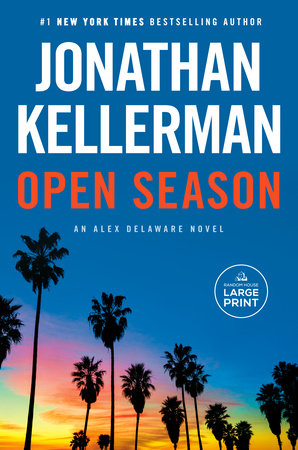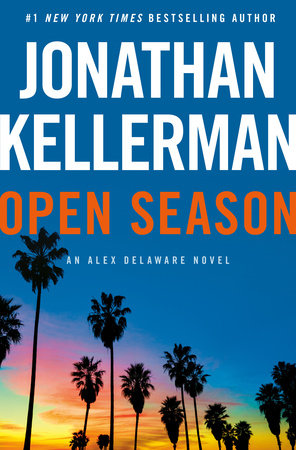Excerpt
Open Season
Chapter 1The images were grainy and blurred. But they told a story.
The storyteller was a camera perched above the entrance to Westside Acu-Care Hospital on National Boulevard, a short stroll west of Robertson. The only active location on a grimy stretch of warehouses dominated by the concrete spaghetti of freeway overpasses.
The lens was a poorly placed witness, focused narrowly on a right-of-center slice of the hospital’s circular drop-off area. Luckily, it had captured the basics.
Saturday, two fifty-three a.m.: A car, dark, compact, speeds around the outer rim of the circle and stops short, rocking back and forth.
Seven seconds later, the driver’s door swings open and remains that way.
A man in a dark hoodie, pants, and gloves exits, runs to the rear right passenger door, and flings it open. Stooping, he reaches in and begins sliding something out. As the bulk of that something is brought outside of the car, it takes form.
Oblong, swaddled in something dark.
Bending his knees and lifting smoothly, the man slings the shape over his shoulder, totes it a few feet, and lays it down with no apparent tenderness.
Five seconds later, he’s driven off and the thing, human-sized and inert, remains on the pavement.
Milo stopped the tape. “In answer to your next question, not for six minutes. The guard took an unauthorized bathroom break and didn’t get back until then. Seventy-eight years old so I guess he gets some kind of pass.”
His frown said not much of one.
I said, “Impressive security.”
“Place was run by skeleton crew, a nurse told me they’re probably going out of business.”
He tapped his computer monitor. “Top of that, the camera’s an antique, the techies couldn’t tell a thing about make and model. And you saw the tags. As in none.”
Removing license plates said careful planning. Likewise gloves and a face-blocking hood. Milo has the highest solve rate in the department. No sense mentioning any of that.
He rubbed his face. “Weird place. If there were patients, I didn’t see them.”
I knew the hospital’s history.
Abortion mill morphing to a slip-and-fall physical rehab center then to one of those inpatient drug rehabs that promises everything and delivers nothing. Each transformation short-lived and polluted by missteps and legal wrangling.
The new owners, a New York–based health-care outfit with connections to New York senators, had tried switching to pediatric urgent care funded by government money. The location made success unlikely. So did several malpractice suits that had scared parents away.
But grant money kept flowing and now the place was tagged as a “neighborhood-based acute-care facility serving the greater, diverse community.” With Cedars, Kaiser, and the U. within easy driving distance, it had no reason to exist.
I knew all of that because during the pediatric phase, I’d evaluated a nine-year-old boy whose broken femur had been set incompetently at Westside, leading to the possibility of a permanent limp.
My job had been to tell the court how that would impact a kid psychologically.
Not profound findings but the plaintiff’s attorney needed someone like me to spell them out.
Milo said, “Any ideas?”
I said, “Rewind.”
He relinquished his desk chair so I could manipulate the tape’s stop-and-freeze. His office on the second floor of the Westside station is closet-sized and windowless and once he’s on his feet he displays all the serenity of a bear in a trap.
Stomping out to the corridor armed with his cellphone, he turned right. Diminishing heavy footsteps said he’d walked a ways.
Then they stopped; none of the usual pacing. Probably calling the Coroner’s. For the third time since I’d been there.
After my fifth viewing of the tape, I went out to the hallway.
Milo was thirty feet away, just standing there. A black eyebrow tented. He walked toward me. “Spot anything?”
I said, “Maybe the techies can get a more precise height estimate but he’s good-sized—probably tall as you—and solidly built. The way he lifts and carries says he’s strong and practiced, so he could work a job requiring muscle. Or he spends a lot of time in the gym.”
His nod said he’d reached the same conclusions.
Twisted lips said he’d hoped for more.
I looked at his phone. “Any progress at the crypt?”
He smiled. “Good guess—scratch that, excellent intellectual reasoning.” He pocketed the phone. “Nah, it was a busy night, she hasn’t even been moved to storage. One promising development. Basia just came on shift, and she promised to facilitate.”
Dr. Basia Lopatinski is his favorite forensic pathologist. Smart, hardworking, inevitably cheerful, she’d been a tenured professor in Poland, had finally gotten board certification in the U.S.
I said, “Go, Basia.”
He said, “If I was oriented that way, I’d try to marry her. Let’s get some coffee.”
We took the stairs down to the ground floor, exited onto Butler, continued north to Santa Monica Boulevard then west along the weekend-quiet thoroughfare.
Warm, sunny Saturday. Beautiful weather always seems cruel when you’re dealing with the loss of a human being. But that’s L.A., seductive and perverse.
Milo’s grimly set mouth set the tone: time to walk in silence.
He’d arrived at the death scene at three thirty and it was now just over seven hours later. His green eyes were sharp but the rest of him looked shopworn, pockmarked pallor clashing harshly with coarse black hair, dirt-gray windbreaker rumpled irretrievably, brown khaki cargo pants worn low and freed from the swell of his gut, sagging sadly.
New desert boots, though. Tan with pink soles. Likely a gift from Rick, who’d long given up trying to spiff up his partner’s wardrobe. The exception: replacing boots defeated every few months by their wearer’s bulk.
Only an hour had passed since Milo’s call at nine forty-five but it felt like much longer. When my phone vibrated on the kitchen counter, Robin and I were finishing a late breakfast and sharing bits of omelet with our little French bulldog, Blanche.
Robin reached over, retrieved the phone, read my screen and grinned. “We squeaked through.”
“Big Guy?”
“Who else.”
I put the phone on speaker. “Morning. What’s up?”
“Hope you’re not busy.”
Robin smiled, kissed me, and got up.
Before following, Blanche cocked her head curiously.
I said, “Promise you a walk when I get back.”
As they left, they both had that knowing look.
I was behind the wheel of the Seville by the time Milo finished giving me the basics. Took Beverly Glen through Westwood over to Pico, hooked west to Butler Avenue, then south to the West L.A. station.
A uniform was waiting at the staff lot to card-key me in.
“Good morning, Doctor.”
“Good morning.”
Not for everyone.
Substantial time lapse between the discovery of an unexplained death and any sort of forensic analysis is the rule, not the exception. Unlike what you’re fed on whiz-bang TV shows, processing a dead human is a painstaking process involving a small army of people who know tortoise beats hare every time.
Uniforms are the first to arrive, then detectives, then coroner’s investigators and crime scene techs. Everyone knows the rules and waits their turn.
Last in line are the crypt drivers who bag and zip then clickety-clack the gurney open and roll the body smoothly into their van as the wheeled cart folds flat obediently. The duration of the ride to 1104 North Mission Road in East L.A. depends on where in the sprawl of L.A. County the crime occurred and, more important, the traffic situation. Just like any other commute.
The body’s driven to the back of the Coroner’s and eased onto a loading dock. No tasteless humor to be heard, just the mute ballet of people doing their jobs.





